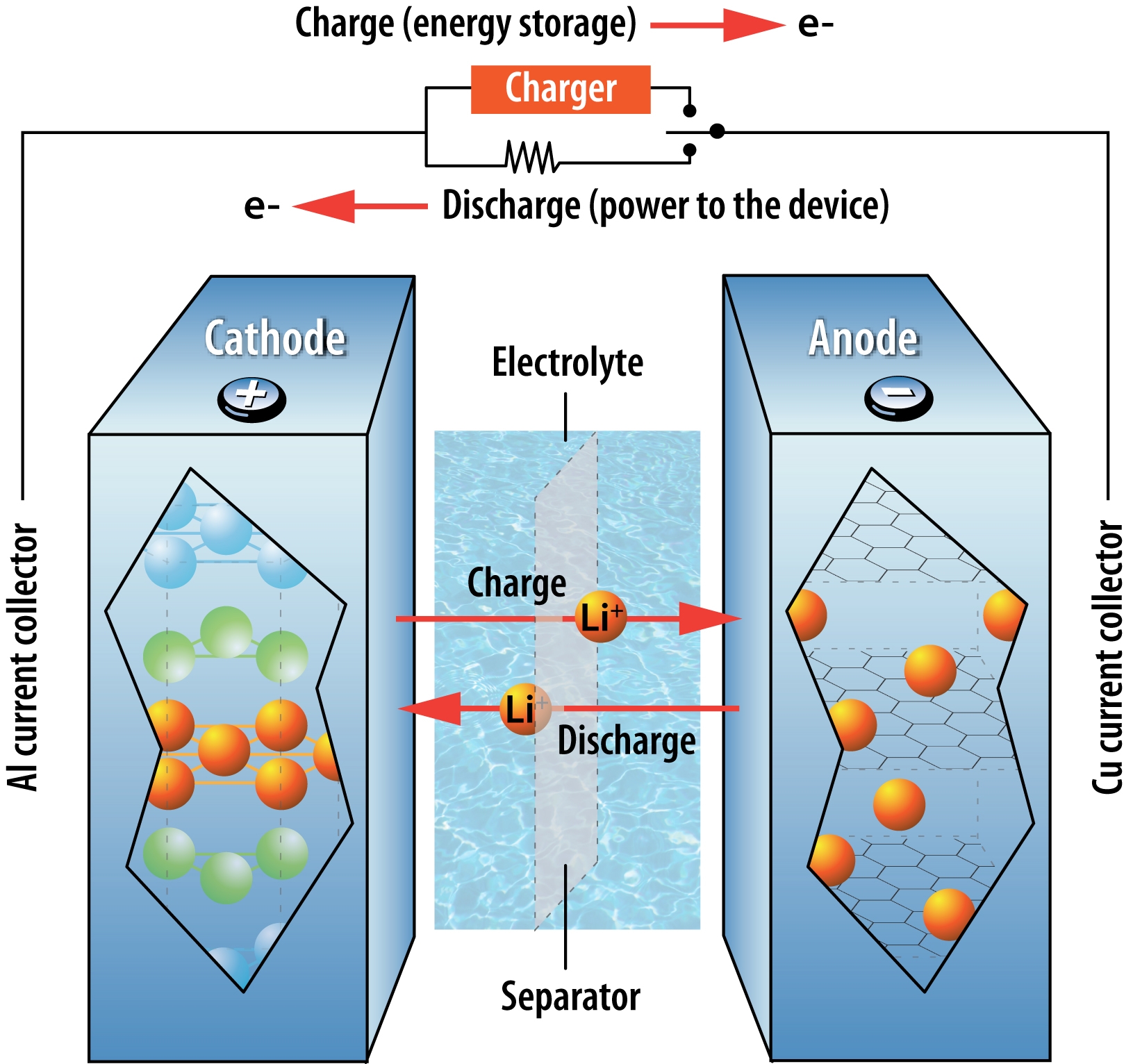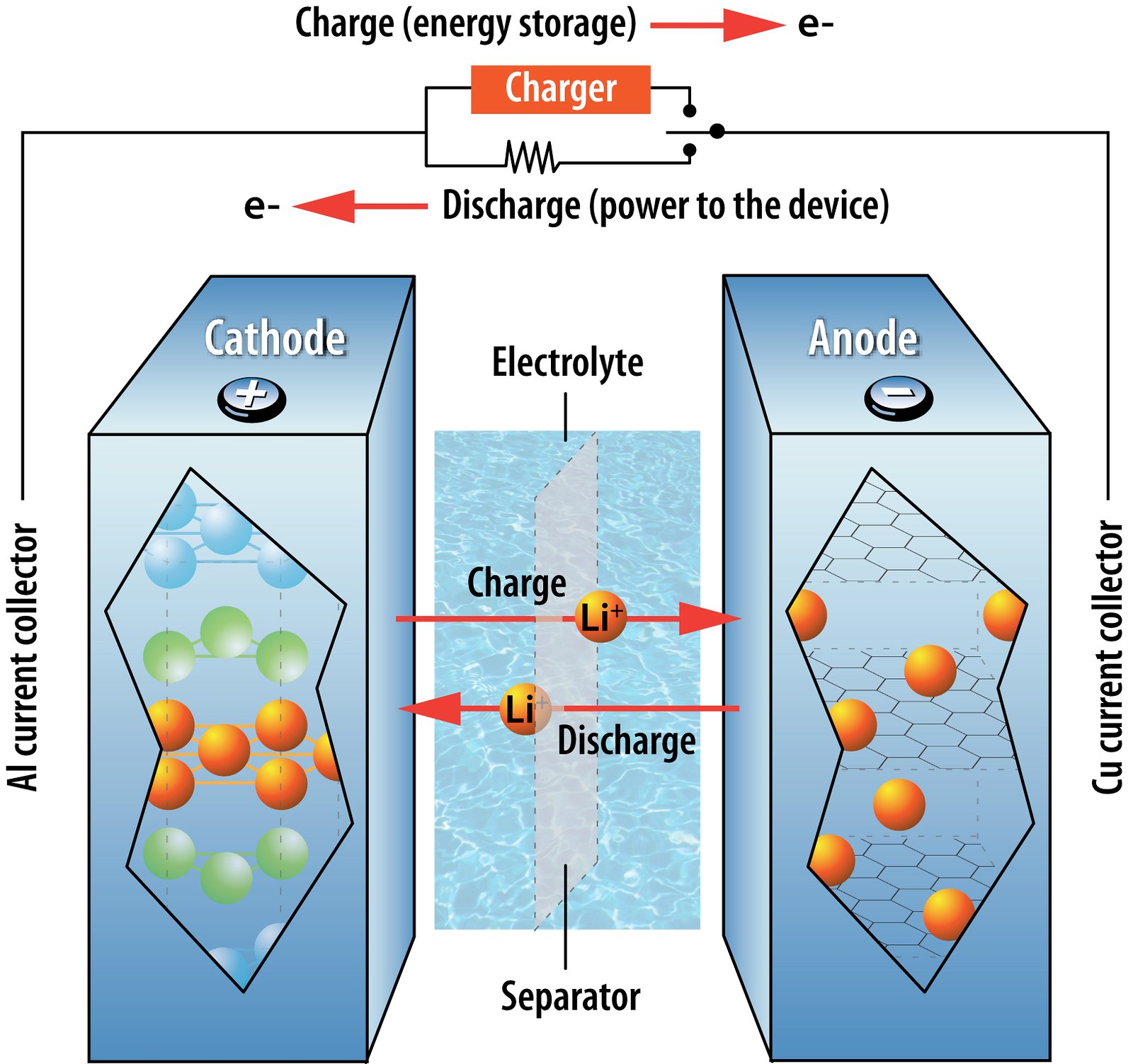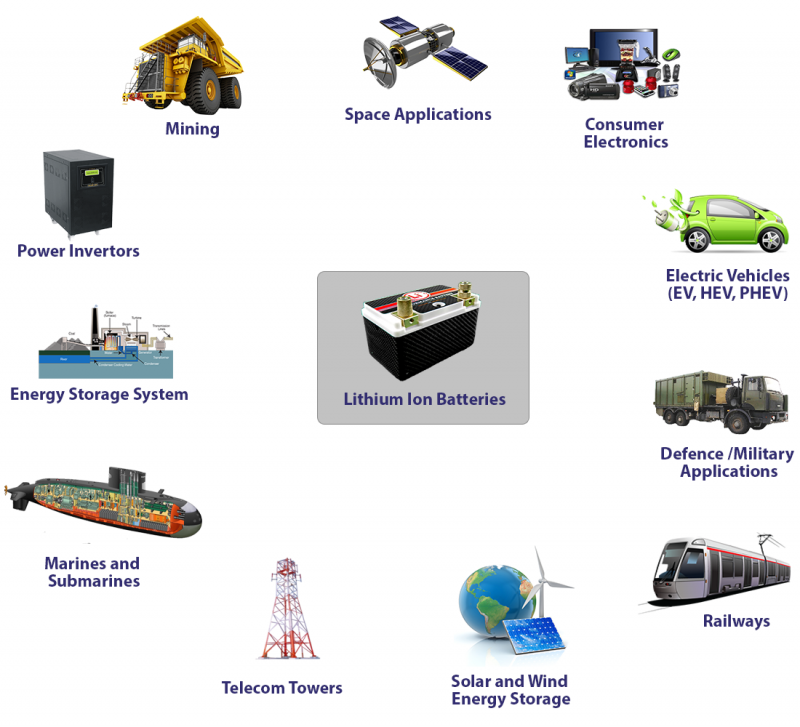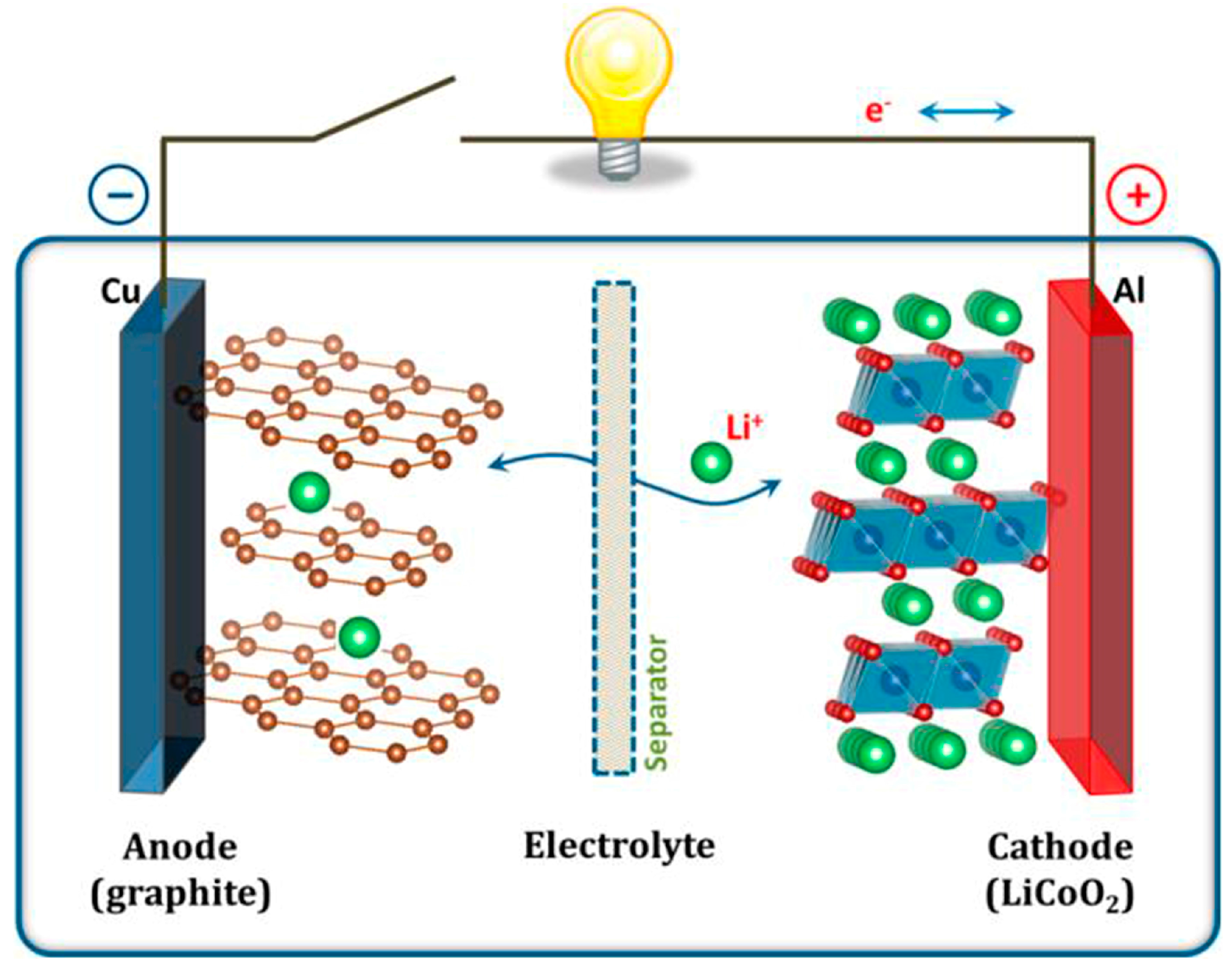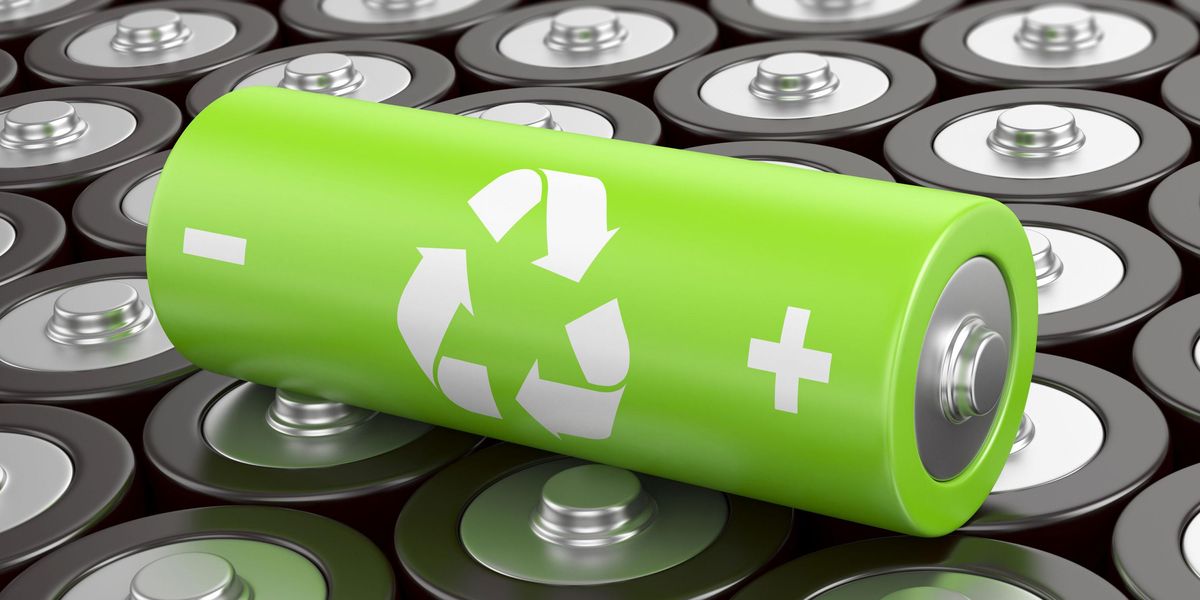Li Ion Battery Presentation
| Introduction to Li-ion Battery | ||
|---|---|---|
| Li-ion batteries are rechargeable energy storage devices that use lithium ions to move between the positive and negative electrodes. They are widely used in portable electronics, electric vehicles, and renewable energy systems. Li-ion batteries offer high energy density, long cycle life, and lightweight design. | ||
| 1 | ||
| How Li-ion Batteries Work | ||
|---|---|---|
| Li-ion batteries consist of an anode, a cathode, and an electrolyte. During charging, lithium ions move from the cathode to the anode through the electrolyte. During discharging, the lithium ions move from the anode back to the cathode, releasing energy. | ||
| 2 | ||
| Advantages of Li-ion Batteries | ||
|---|---|---|
| High energy density allows Li-ion batteries to store more energy in a smaller size. Long cycle life, with typically hundreds to thousands of charge-discharge cycles. Low self-discharge rate, enabling longer shelf-life without significant loss of charge. | ||
| 3 | ||
| Applications of Li-ion Batteries | ||
|---|---|---|
| Portable electronics: Li-ion batteries power smartphones, laptops, tablets, and wearable devices. Electric vehicles: Li-ion batteries provide the necessary energy for electric cars and hybrid vehicles. Renewable energy systems: Li-ion batteries store energy generated from solar panels and wind turbines. | ||
| 4 | ||
| Challenges of Li-ion Batteries | ||
|---|---|---|
| Safety concerns: Li-ion batteries can be prone to thermal runaway, leading to fires or explosions. Cost: The manufacturing process of Li-ion batteries involves complex technologies, resulting in higher costs. Limited resource availability: Lithium, a key component of Li-ion batteries, is not abundant and its extraction can have environmental impacts. | ||
| 5 | ||
| Recent Developments in Li-ion Batteries | ||
|---|---|---|
| Higher energy density: Researchers are developing new materials and designs to increase the energy density of Li-ion batteries. Faster charging: Advances in battery technology aim to reduce charging times significantly. Solid-state batteries: Solid-state Li-ion batteries with improved safety and performance are being explored. | ||
| 6 | ||
| Environmental Impact of Li-ion Batteries | ||
|---|---|---|
| Li-ion battery recycling: Proper recycling and disposal of Li-ion batteries help reduce environmental impact. Sustainable materials: Researchers are investigating sustainable alternatives for battery components. Lifecycle analysis: Evaluating the environmental impact of Li-ion batteries throughout their entire lifecycle is essential for sustainable development. | ||
| 7 | ||
| Future Trends in Li-ion Battery Technology | ||
|---|---|---|
| Increased energy storage capacity: Continued research aims to develop Li-ion batteries with even higher energy storage capacity. Faster charging and longer lifespan: Improvements in battery chemistry and materials will enable faster charging and longer battery lifespans. Integration with renewable energy: Li-ion batteries will play a crucial role in integrating renewable energy sources into the grid. | ||
| 8 | ||
| References (download PPTX file for details) | ||
|---|---|---|
| Author... (Year). Title of the study. Journal, Volume(I... Author... |  | |
| 9 | ||

